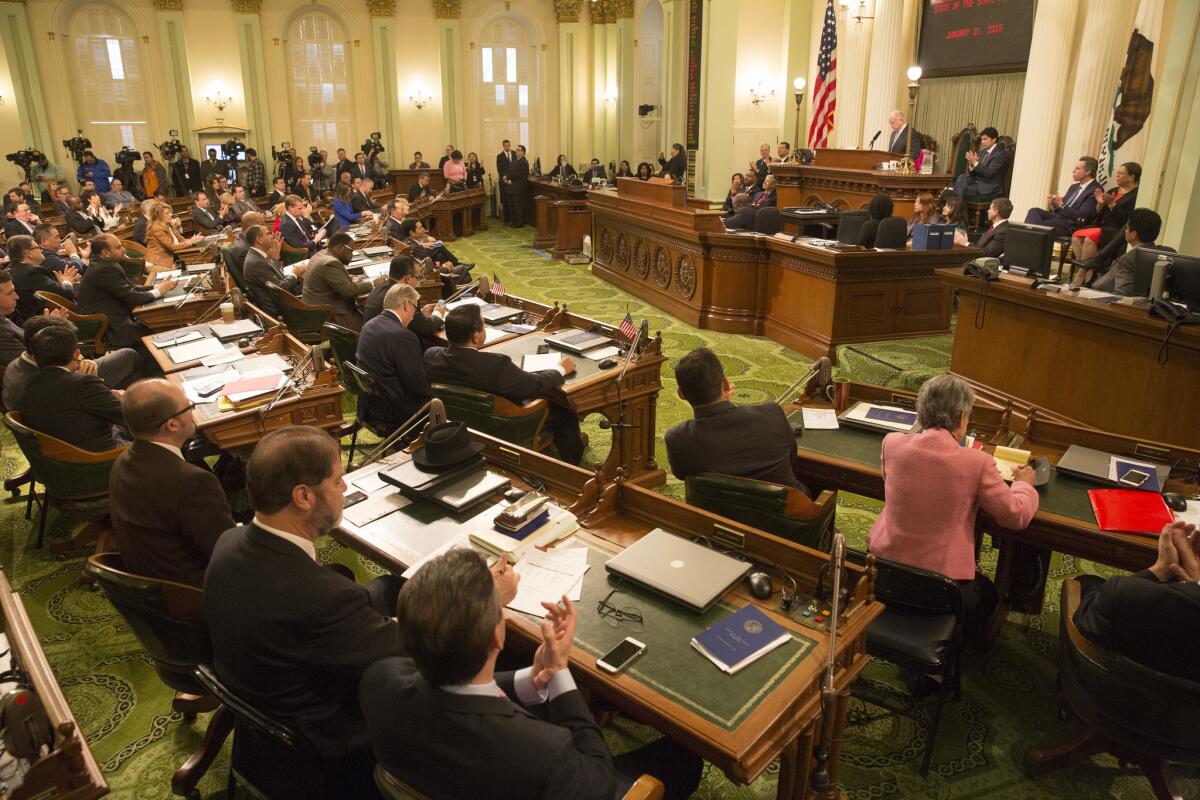Column: Political Road Map: How unlimited cash gets funneled into legislative campaigns

Donations made to a candidate for the state Assembly or Senate are usually a small part of California’s political money machine, a function of the relatively low limits on the size of contributions.
Except when the money comes from a political party. That cash can flow into the campaigns in unlimited amounts. And it’s completely legal.
Since only the early summer, the parties have given almost $20 million to legislative campaign committees, with two-thirds of that coming from Democrats.
Individuals can give $4,200 per election to a legislative campaign, more than legal limits for donating to congressional candidates. But if the same person decides to instead support Assembly or Senate candidates by donating to a political party, the maximum they can give soars to $35,200.
It’s true that political party leaders could spread that money around to several candidates, but they also can funnel it all to a single candidate — thus allowing wealthy donors to have a much larger role than promised under the law.
So who made that legal? Chances are, you did.
Voters approved Proposition 34 in 2000, written by the Legislature after a more stringent campaign finance law was challenged in court. The official ballot argument said the measure would resolve legal concerns over contribution limits while enacting “strict” caps that would “rein in special interests.”
But none of the discussion that year seemed to catch the huge exemption for donations to political parties.
It’s a money-laundering scheme that has completely duped voters.
— Assemblyman Marc Levine (D-San Rafael) on the law that allows unlimited cash from political parties
In a November 2009 editorial in The Times, one of Proposition 34’s legislative authors apologized for allowing donors to “legally circumvent” donation limits. Since then, the two major parties have been the conduits for millions of dollars being funneled into the Legislature’s most contentious races.
While there are plenty of unlimited dollars also being spent by independent political action committees — that, too was a creation of Proposition 34 — some observers believe political party money is more insidious, because it goes directly to the politician.
“It’s a money-laundering scheme that has completely duped voters,” said Assemblyman Marc Levine (D-San Rafael).
Political Roadmap: What happens if Democrats win a supermajority in the Legislature? »
Levine hopes to introduce legislation next year to close the political party loophole. And because it would amend the state’s landmark political ethics law, it would likely also have to be approved by voters in 2018.
Data compiled by the Target Book, a nonpartisan analysis of California campaigns, shows that the $20 million in unlimited political party cash has only been spent on about two-dozen legislative races, mostly showdowns in competitive districts. Almost a quarter of that money is funneled through county political parties, a particularly hard-to-track system because these local committees can send their money to legislative candidates all over the state. That means county political parties in, say, Humboldt County can transfer big bucks to a legislative race in San Diego.
“This becomes dark money without more disclosure,” Levine said.
Disclosure could be a key talking point. This past spring, lawmakers placed Proposition 59 on the November ballot, an advisory question about money in politics. The ballot measure focuses on the U.S. Supreme Court’s 2010 ruling in the Citizens United case, which effectively offered a new veil of secrecy for donors seeking to influence congressional and presidential races.
The state campaign money system generally is more transparent about political party donations. But that’s hardly cause for celebration when voters in a contested Assembly or Senate district on Nov. 8 see only the political party’s name on a contribution disclosure form, and not that of the person who actually wrote the check.
Follow @johnmyers on Twitter, sign up for our daily Essential Politics newsletter and listen to the weekly California Politics Podcast
To read the article in Spanish, click here
ALSO:
Election day has become election month in California
What you need to know about the 17 ballot propositions on November’s statewide ballot
More to Read
Get the L.A. Times Politics newsletter
Deeply reported insights into legislation, politics and policy from Sacramento, Washington and beyond. In your inbox three times per week.
You may occasionally receive promotional content from the Los Angeles Times.











